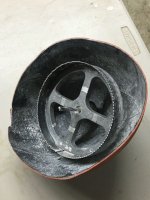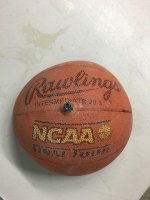I do not have experience with the Nora tool. I have used a similar designs from Hole Pro, the X-230 and X-305 models.
http://www.holepro.com/powerseries.html
If the blades contacts framing as it finishes the cut in the drywall, the assembly can kick back. In an ideal world it would be best to do your layout before hand to notate any obstacles, but sometimes projects do not work out that way.
After you have made the cut, you have to be diligent of holding the drill and cup upright to keep from spilling the dust as you climb down the ladder. It is a bit clumsy, so it is nice to be able to pass the drill with the attached cutter to someone on the ground. Not the best for productivity as you have two workers on a single task.
When working in a finished work space, you need to clean the rim of the cup between cuts. Fine dust sticks to the lip and may leave a "ghost like' ring. If the ceiling has been painted recently, you have to be careful not to leave rub marks in the paint.
The reason a device like this is to reduce clean up time for yourself. If it was during the rough in phase of a project, I would rather use a hole saw or drywall saw then give it a quick sweep.


